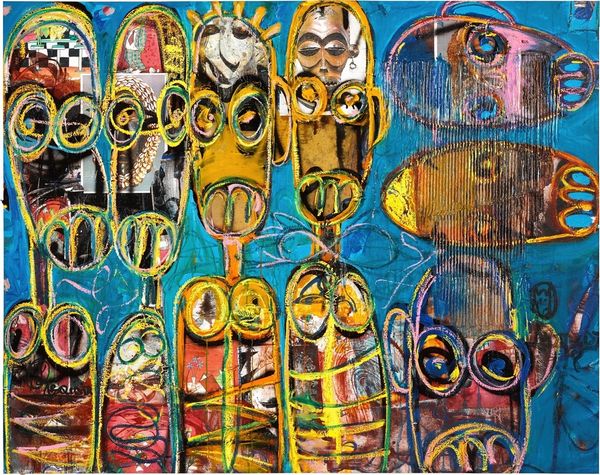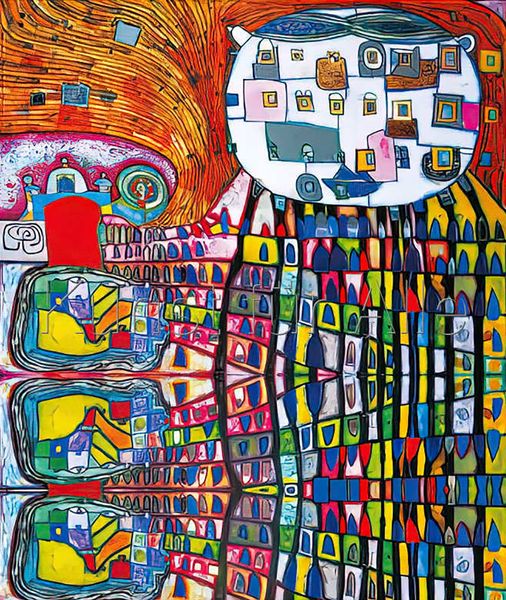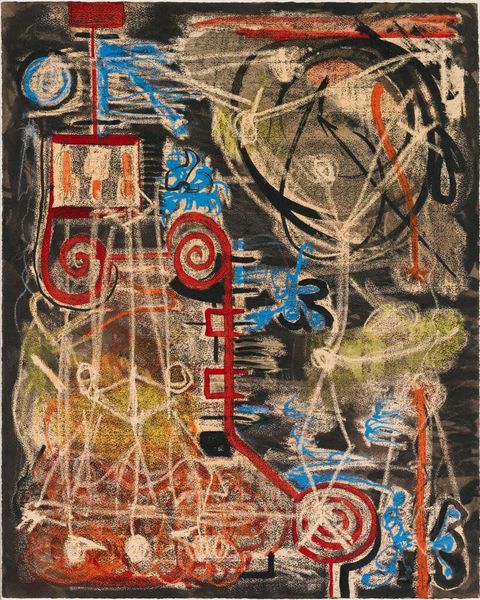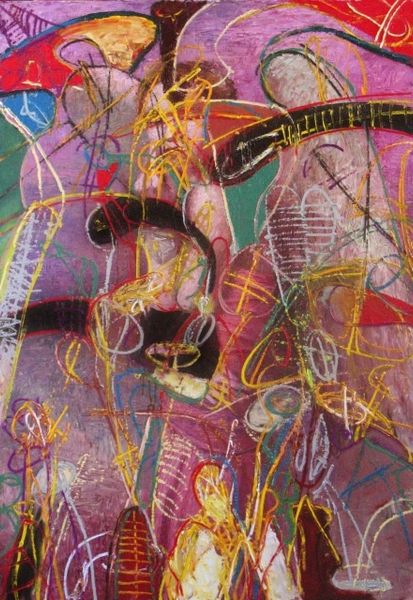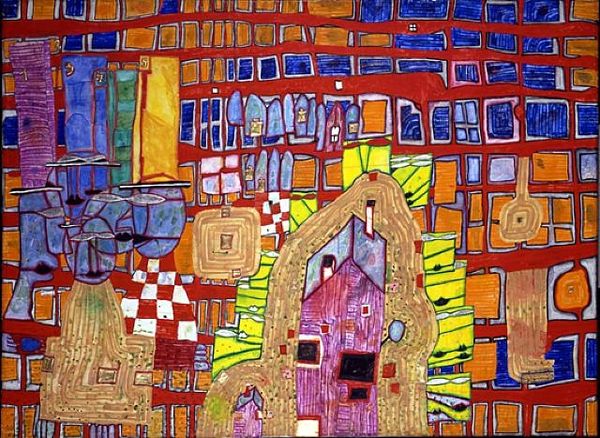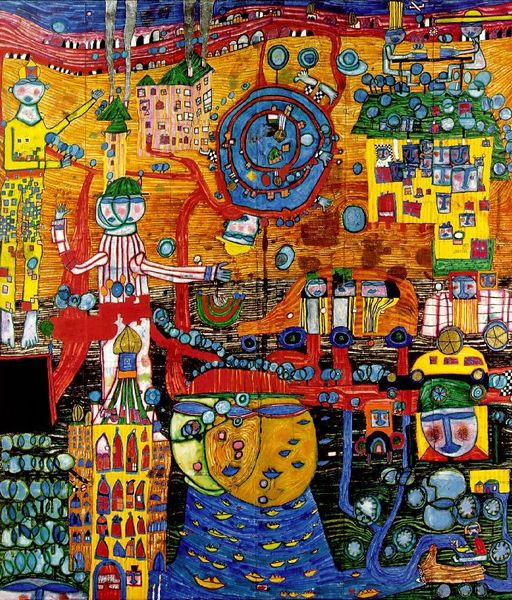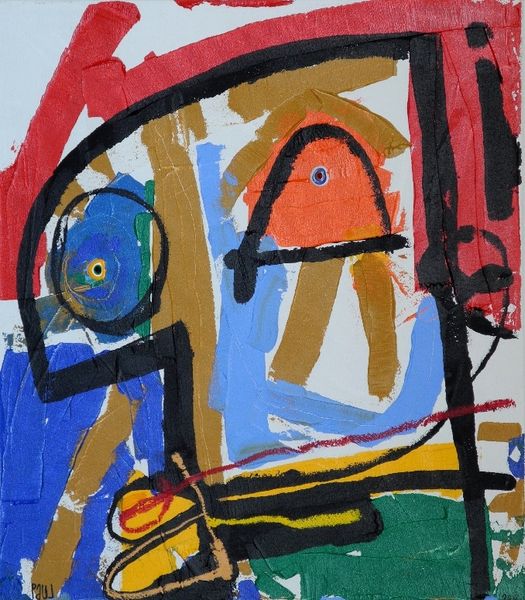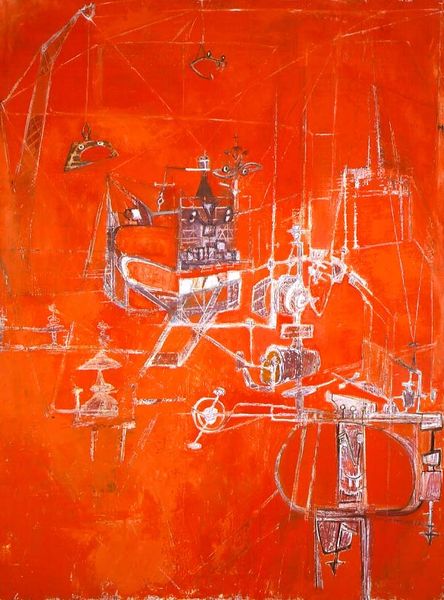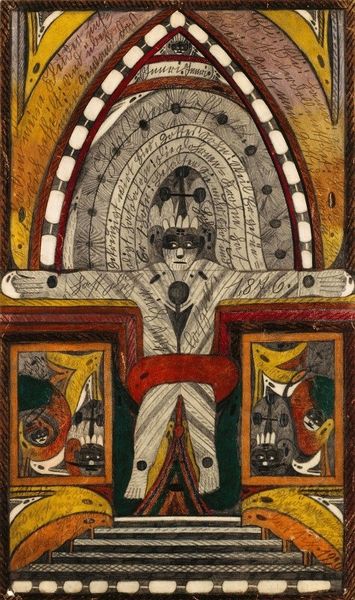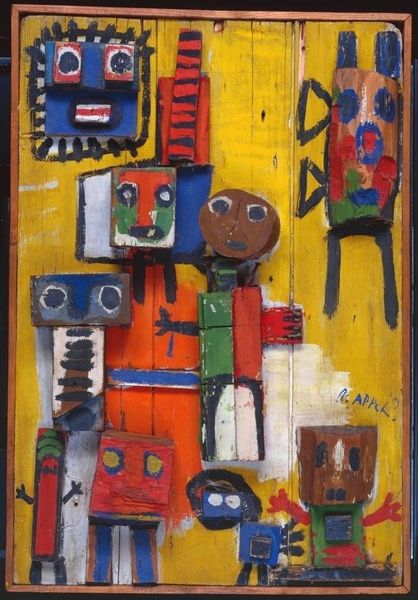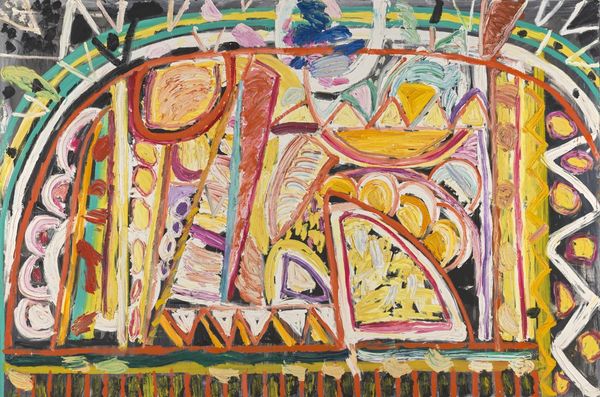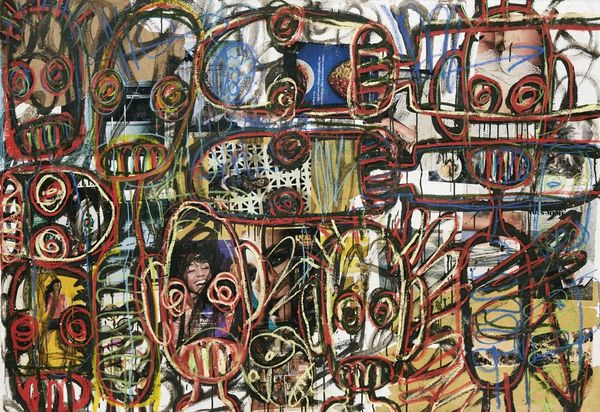
Dimensions: support: 2134 x 1727 mm
Copyright: © Alan Davie | CC-BY-NC-ND 4.0 DEED, Photo: Tate
Curator: This is Alan Davie's "Entrance for a Red Temple No. 1," a large-scale work held in the Tate collection. Editor: It feels chaotic, yet strangely compelling. The bold colors and abstract shapes give off a primal, almost ritualistic vibe. Curator: Davie's work often combined personal symbolism with influences from various cultures. Consider how the title itself evokes ancient religious sites. Was Davie interested in the role of temples as public spaces? Editor: Absolutely, I see a lot of visual languages here—Egyptian ankhs, wheels of fortune, maybe even shamanistic figures. It's like he's building a universal temple of symbols, tapping into collective human experience. Curator: And do you think its accessibility to the public might be limited by its reliance on personal symbolism? Editor: Perhaps initially. But I think the emotional impact transcends the need for precise interpretation. The red, especially, speaks to intense feeling. Curator: Davie's construction of personal meaning raises questions about the art world's role in legitimizing these kinds of expressions. Editor: I think the painting serves as a reminder of the enduring power of symbols and imagery, even when their exact meanings remain elusive.
Comments
tate 8 months ago
⋮
http://www.tate.org.uk/art/artworks/davie-entrance-for-a-red-temple-no-1-t00417
Join the conversation
Join millions of artists and users on Artera today and experience the ultimate creative platform.
tate 8 months ago
⋮
In his early work Davie had accessed a higher level of consciousness through spontaneous or automatic painting. By the 1960s, as in this painting, he referred to this higher state by including emblems and signs associated with Zen Buddhism and magic. This picture went through countless transformations before arriving at its final state. These hidden layers can be seen throughout the picture, perhaps suggesting levels of consciousness. Davie has described the picture as ‘an immobile and timeless frontal object of meditation, or an evocative invitation to enter, like the entrance to a place of worship’. Gallery label, September 2004
